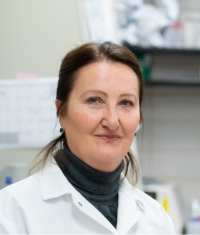Dr. Agneta Simionescu is an Assistant Professor of Bioengineering at Clemson University. She earned her Ph.D. in Cell Biology and Biochemistry, from the Romanian Academy of Science, Bucharest, in 2001. For her dissertation, she examined the role of matrix metalloproteases (MMPs) in cardiovascular diseases. In Targu Mureș, Romania, she functioned as a Research Scientist at the Institute for Cardiovascular Diseases and Transplantation, and at the University of Medicine and Pharmacy. Working under the direction of the distinguished cardiovascular surgeon, Professor Radu Deac, and collaborating with her husband, Dr. Dan Simionescu, as well as other scientists and surgeons from the institute, her research was concentrated on the pathology of human heart valves, dilated cardiomyopathy, and cardiac transplantation immunology. After coming to the US in 2003, she started her faculty position at Clemson University, in July 2006, as a research assistant professor and then as an assistant professor, in 2012.
Her primary research interests are in the area of tissue engineering with projects that address the regeneration of cardiovascular structures able to substitute damaged blood vessels and mitral valves, and contribute to the endogenous regeneration and healing of the injured cardiac muscle. Her fundamental belief is that it’s critical to understand the cellular mechanisms involved in tissue development, regeneration, and repair, as they offer valuable cues to building strategies applied in cardiovascular regenerative medicine. Hence, this lab develops compact 3D scaffolds capable of directing adult stem cell differentiation into cardiovascular cells; biochemical and physical stimuli are delivered using bioreactors built for each of these specific cardiovascular structures. It’s been well known that diabetes and high blood pressure are major risk factors involved in cardiovascular structures’ degeneration, consequently, the long-term goal of this investigator is to develop tissue engineered structures resistant to the anticipated deteriorations initiated by the harsh diabetic and hypertensive milieu. Nevertheless, the ultimate goal of this research is to translate tissue-engineering solutions from the lab to the patients.
